On this Page – the series of Screen Shots is from the NWP Sub Project – where the Context of the NWP Sub Project as part of the Umbrella CLCV Project was documented and the Concepts and Principles underlying the methods and mechanisms of the Browser were explained.
The NWP Project aim: was to build an Information Model to Capture the Umbrella CLCV Project – and to build a simple (visual) browser of the Information Model – and to build a Framework for the Key Information/Data about the project, out of the sub-projects – as an archive which – going forward – could be accessed and evolved in the future and integrated with development projects in the Cotton Agriculture Sector.
The Problem was that typically for Development Projects funded by various countries e.g. The Potato Crop Development Projects over 15 years funded by France, the UK, Germany, Norway etc etc. – there was not a good record and archive of these projects (the odd document or folder might be produced from a filing cabinet somewhere) and there was no integration between these projects – so whatever were the achievements of individual projects there was no evolution of achievement discernible.
The Context for the NWP Project was explained – the preliminary work with Dr. Shahid Ahmad Director of the Water Resources Research Institute at NARC in Pakistan – where Dr Ahmad was focused on developing water resources so precious to the agricultural sector and where he was employing various satellite data from project partnerships e.g. with Japan, and where he was very keen to harness computer-based mechanisms. We developed a number of preliminary “concept demonstrators” e.g. AWIS Agricultural Water Information System.
The reality was that Dr Ahmad’s vision and the vision of computer-based mechanisms for information and data modelling in agriculture in Pakistan were ahead of their time – and when presented to various governmental and institutional audiences, only a few in the audience had insight and the majority response may be summed up by an observation made by a senior member of the Central Cotton Research Institute at the time (late 1995) when AWIS and NWP were presented : “what we need is spades and tractors not these fancy computers”. Interesting; Discuss.
The experience of the years 1994/5/6 – of the preliminary work e.g. AWIS and the CLCV Project/NWP – was very interesting and informative as was the outcome of the CLCV Project.



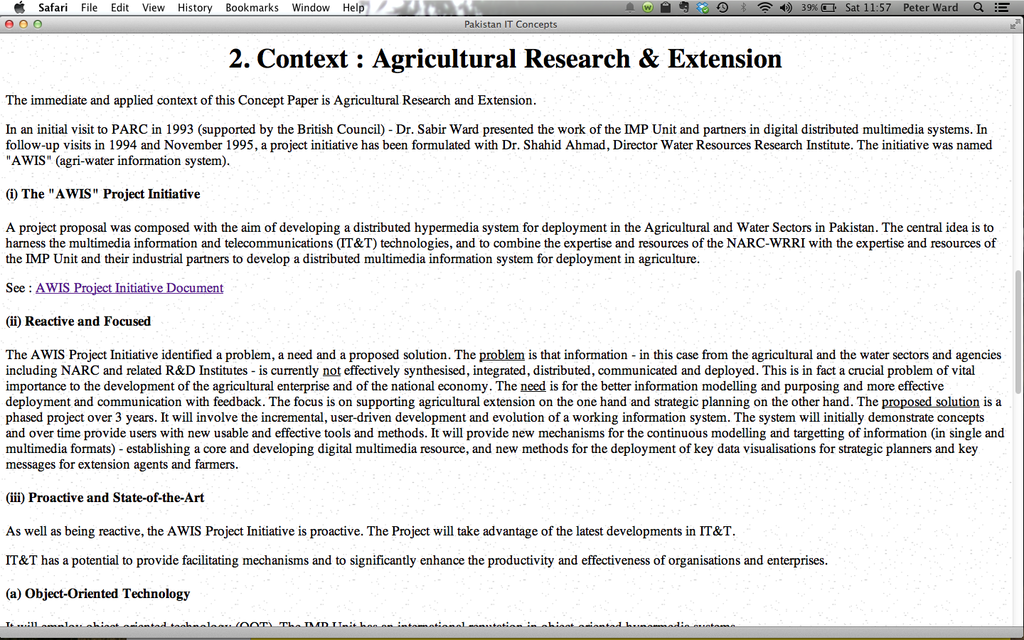

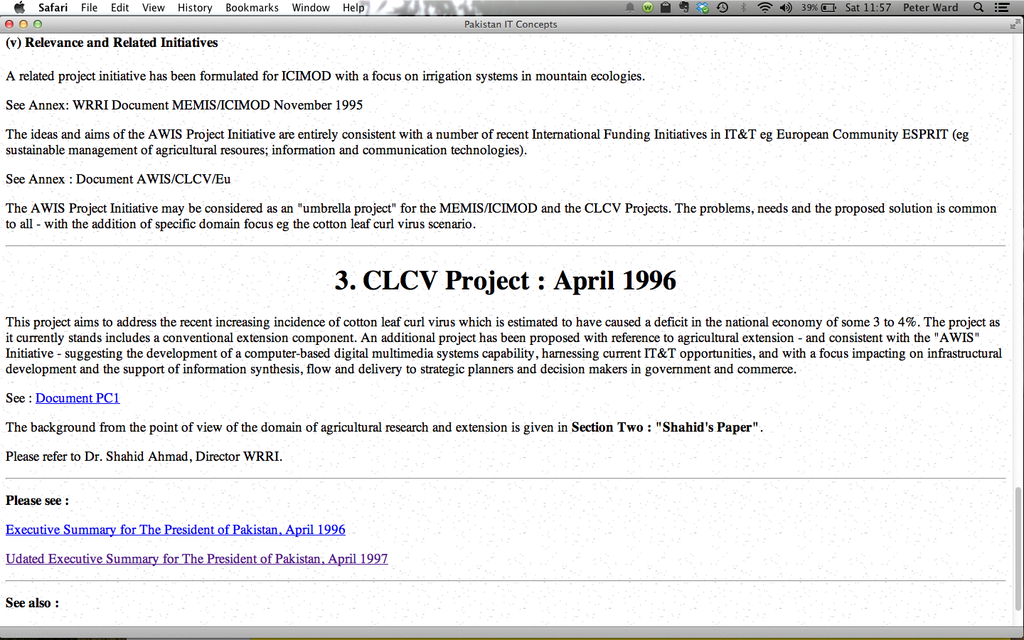
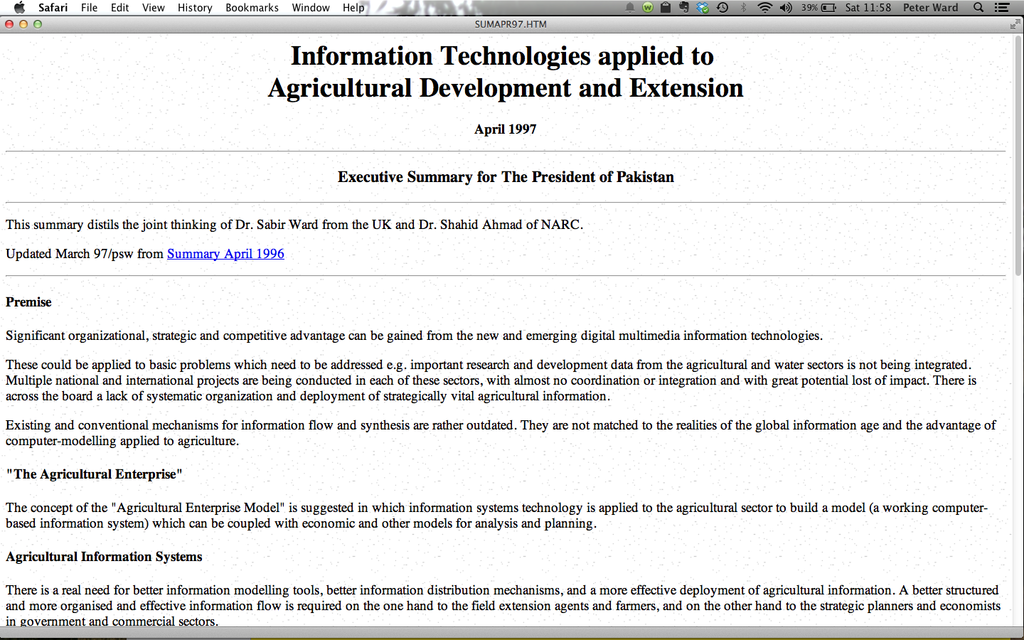


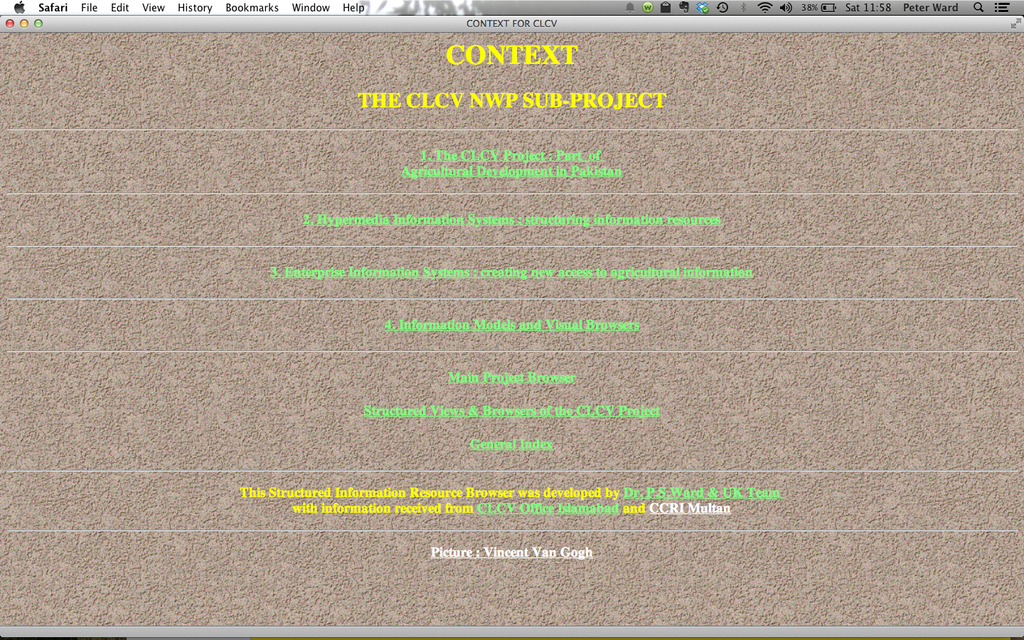


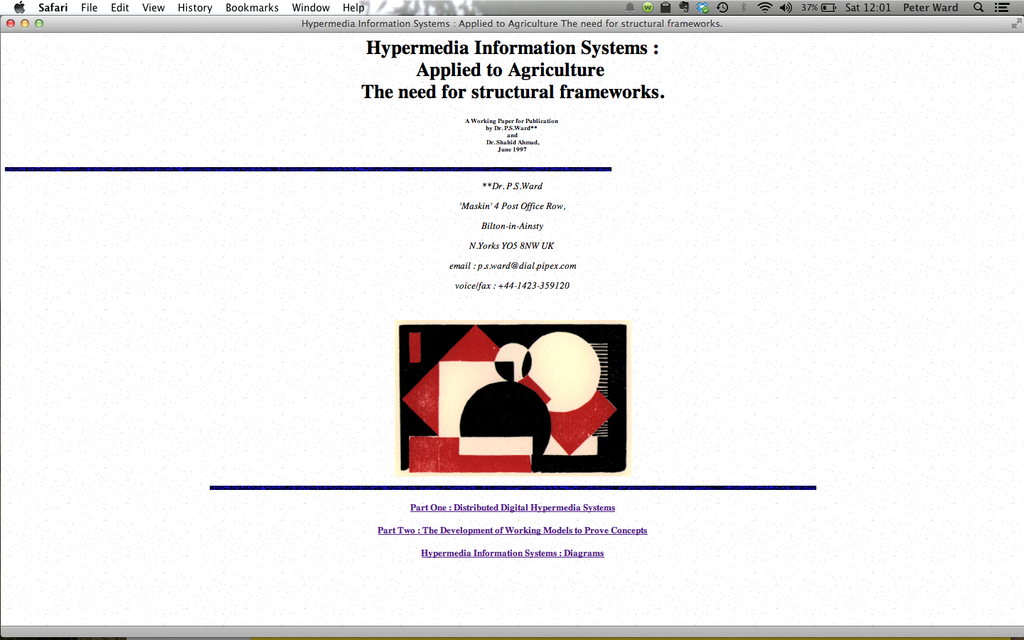



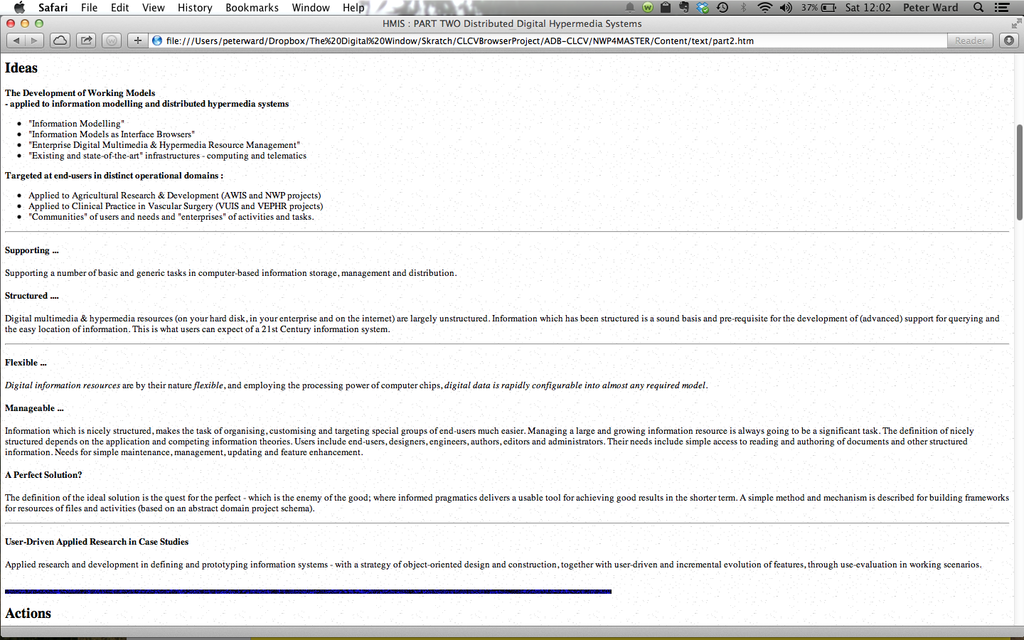
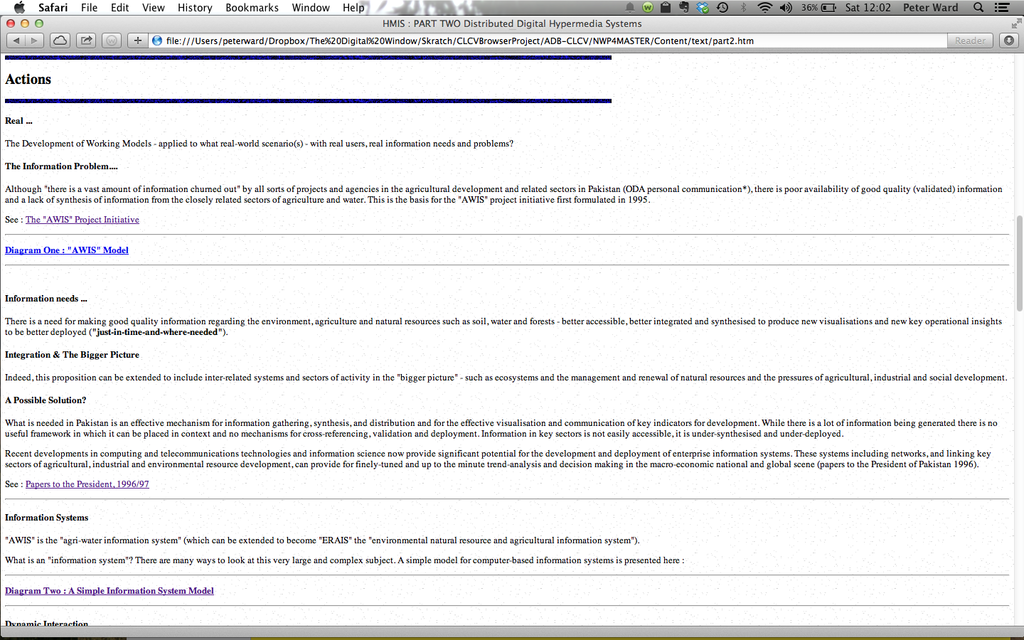
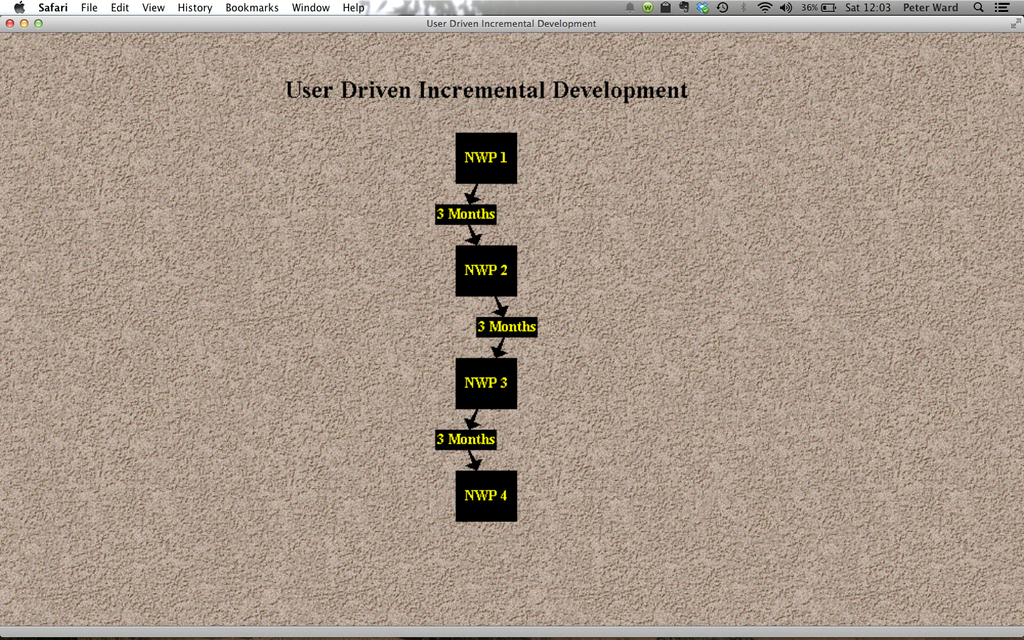

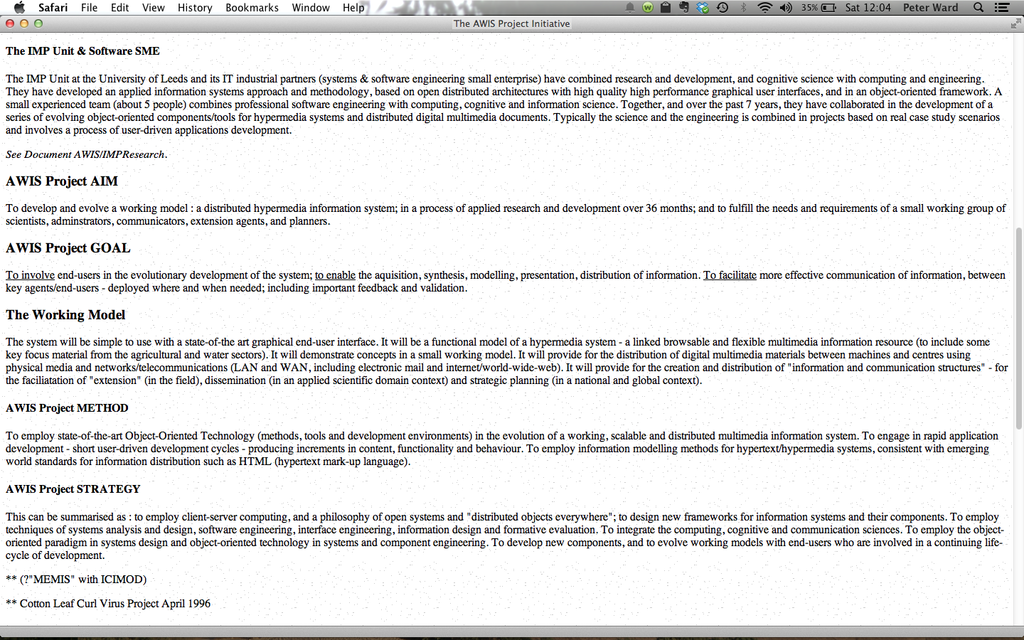



User Driven Incremental Development
The strategies we employed in the early 1990’s onwards in the development of an Evolutionary Series of Tools and Applications (of which the The Magic Browser HTML Authoring and Display Tool and The CLCV Project Browser were a part of this series) included : open systems software and applications distributed on the network (UNIX/X11/TCP-IP), Object Oriented Software Engineering and User Driven Incremental Development. User Driven Incremental Development involves gathering user requirements, delivering aversion, assessing the use and user feedback, refining the design and in a cycle of development – evolve – an application to meet the needs of the users – as their requirements evolve.
The NWP Project followed this strategy – where in the first phase there was very little awareness and understanding of computer-based mechanisms for information and project modelling – which understanding was promoted as versions of the NWP (The CLCV Project Browser) were delivered, demonstrated and provided to the end-user groups. NB The Short Cycles of Requirements/Needs Capture, User Evaluation and the Next Version. Compare this to a strategy of designing a big sophisticated tool/application and taking 12-24 months to deliver it. I believed this to be a mistaken strategy in the mid 1990’s (when it was a common software development model) and I believe this to be a problem today : big information systems/software projects, with big budgets, long time frames and many participants – lead so often to big software that does not do the trick! The cliche persists of the Big IT Project, over 2/3 years, exceeding its budget, failing to deliver and/or late to deliver is repeated time after time! Breaking a big project down to progressive cycles of design, delivery, evaluation and user driven participation – involves the users and provides them with an opportunity for ownership!
